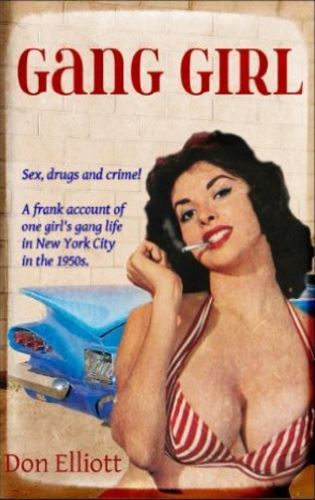

Originally published by Dell in 1962 and now republished by Stark House’s Gat Books in May 2018, Kane’s Frenzy of Evil pokes around under the surface of the well-to-do who live in resplendent mansions, people such as Jonathan Joseph Carson (62) and his young bride Dolores Zamora Carson (22). Jonathan Joseph (as he is referred throughout the book) could throw a brilliant party because “his close friends and neighbors were bright, wise, witty, clever, and quick; the older ones shamefully rich and riotously successful; the younger poised upon the glimmering brink of similar riches and similar successes.” And, “what stranger – nay, what intimate could possibly divine that beneath the stylish formal evening attire, beneath all and with only nine people present, there ran a vile and turgid undercurrent of hate, love, guilt, rape, adultery, madness, and murder.”
Jonathan Joseph and George Ross were the Carson and Ross of Carson, Ross, & Ross, a law firm ensconced at 1 Wall Street. They were college mates at Princeton. Ross was the quarterback, plotting the plays and calling the signals, while Jonathan Joseph carried the ball. Ross was the law man, the student, the digger but Carson was “a blazing, ruthless, shrewd and eloquent trial inquisitor.” He was a courtroom star. Carson was a super-luminary in a town of luminaries, “an eccentric, a fiery oddball, an ultra-character in a town of characters.” Outside of business, they were different. Ross married once and produced two children and lived happily ever after. Jonathan Joseph married thrice before he even met Dolores. First to a young, red-lipped, slim-hipped actress. Second, to a large, blonde, curvy specialty dancer. Then, a cold, haughty, society woman who died of cancer. The first two divorced him on grounds of cruelty. Sally the second wife suffered from a total concussion due to a blow to the head and a coma for two days. Once her face was smashed, including five teeth extracted twelve stitches inside the mouth, and a need for plastic restoration to the nose.
Indeed, as his friend Dr. Bernstein noted, Jonathan Joseph “functions in life as a sadist, an extreme sadist.” He is a great lawyer because he crushes the opposition. “He pulverizes the opposition and he revels in it.” Jonathan Joseph was not constantly cruel, but was generally charming, with flare-ups and a particular kind of frenzy during heavy drinking bouts.
And, dear reader, given these circumstances, what would be the situation do you think if word got out that the dazzling Dolores Zamora had taken a lover. What would Jonathan Joseph do and what would the consequences be?



















































